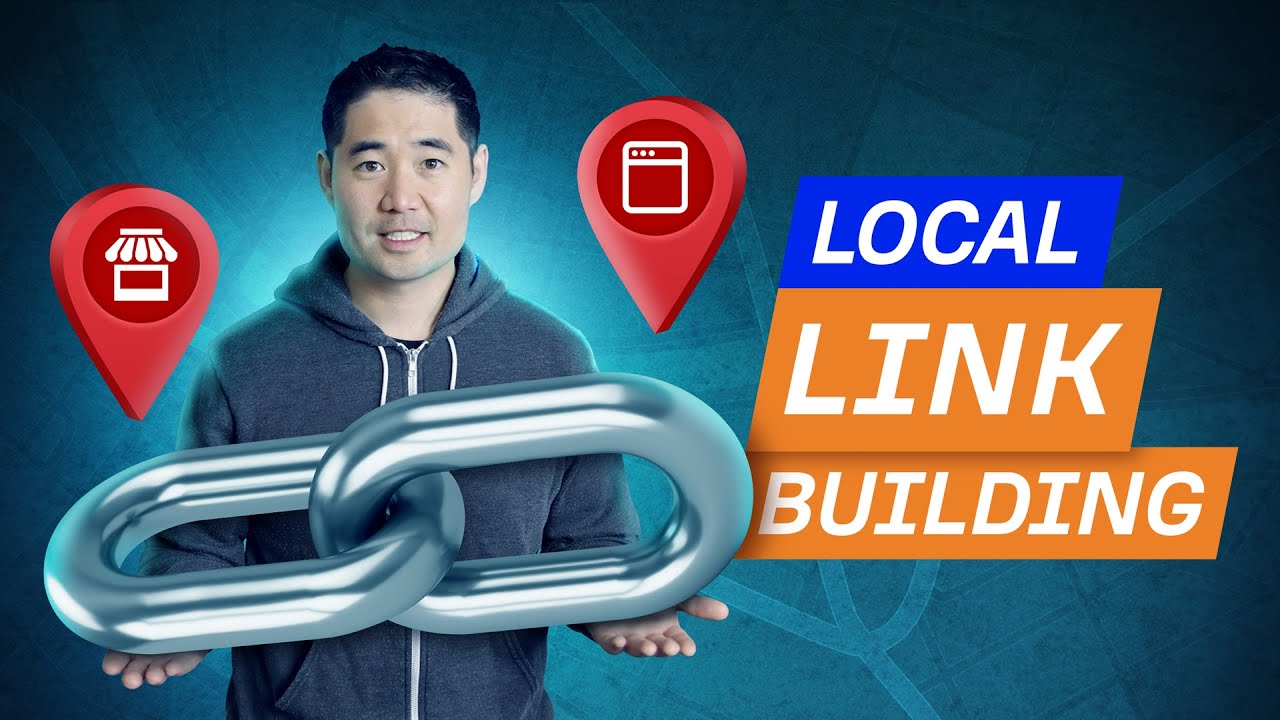In the ever-evolving digital landscape, local businesses face fierce competition for online visibility and customer attention. To thrive in today's market, a strong Local SEO(Search Engine Optimization) strategy is paramount. In this article, we present a 12-point Local SEO Audit Checklistto guide local businesses through the essential steps of conducting a complete and effective Local SEO audit. A Local SEOaudit is a systematic evaluation of a business's online presence to identify areas for improvement and optimize its local search rankings.
By conducting a comprehensive audit, businesses can fine-tune their digital assets, improve local search performance, and attract more local customers. From optimizing Google My Business(GMB) listings to monitoring online reviews and implementing local link building, this checklist covers all the crucial aspects to ensure a robust local online presence. By following these steps, businesses can gain a competitive edge, connect with their target audience, and ultimately bolster their success in the local market.
What Is A Local SEO Audit?

Local SEO Audits | Perfect Search
A Local SEOaudit is a systematic evaluation of a business's online presence with a specific focus on its local search engineoptimization (SEO) performance. The goal of a Local SEO audit is to assess how effectively a business is positioned to attract local customers through online searches. It involves a thorough examination of various factors that impact local search rankings and visibility.
Why Is Local SEO Audit Important For Businesses?

25-minute Local SEO Audit That Will Crush Your Competitors
A Local SEO audit is crucial for businesses for several reasons, as it offers numerous benefits that directly impact their online visibility, customer reach, and overall success in the local market. Here are some key reasons why a Local SEO audit is important for businesses:
- Identifying Improvement Opportunities -A Local SEO audit helps businesses identify areas of their online presence that need improvement. By evaluating different aspects such as Google My Business (GMB) optimization, local citations, website content, and online reviews, businesses can uncover opportunities to enhance their local search visibility and attract more local customers.
- Boosting Local Search Rankings -Through a thorough audit, businesses can identify factors affecting their local search rankings. By addressing issues like inconsistent NAP information, unoptimized website content, or poor local link building, businesses can improve their search engine rankings and appear more prominently in local search results.
- Increasing Local Visibility -An optimized online presence, especially on platforms like GMB, enhances a business's visibility to potential customers searching for local products or services. Improved visibility in local search results means more opportunities for potential customers to discover and engage with the business.
- Enhancing Customer Trust and Credibility -Managing online reviews and reputation is a vital part of a Local SEO audit. Addressing customer feedback, responding to reviews professionally, and maintaining a positive online reputation helps build trust and credibility with potential customers, leading to higher customer confidence in the business.
- Targeting Local Audiences Effectively - Local SEO strategies help businesses reach their target audience in specific geographic locations. By optimizing website content with local keywords and creating location-specific landing pages, businesses can tailor their online presence to resonate with local customers.
- Gaining a Competitive Edge -In competitive local markets, a well-executed Local SEO strategycan be a differentiating factor. By conducting regular audits and staying proactive with improvements, businesses can outperform competitors in local search rankings and customer engagement.
- Maximizing Mobile Traffic -With the increasing prevalence of mobile device usage for local searches, optimizing for mobile-friendliness and local voice search becomes essential. A Local SEO audit ensures that businesses are well-equipped to cater to mobile users effectively.
- Measuring SEO Performance -A Local SEO audit allows businesses to measure the effectiveness of their SEO efforts over time. By using tools like Google Analyticsand Search Console, businesses can track key performance metrics and make data-driven decisions to refine their strategies.
Google My Business (GMB)

GOOGLE MY BUSINESS SEO 2023 - The Fastest Way to Rank N#1 on Google Maps
Google My Business (GMB) is a free and powerful tool provided by Google that allows businesses to manage their online presence on Google's search engine and map results. It serves as a central hub where businesses can provide essential information, engage with customers, and monitor their online reputation. GMB is particularly crucial for local businesses aiming to attract customers within a specific geographic area. Key features and benefits of Google My Business include:
- Business Listing Management -GMB enables businesses to create and manage their business listing on Google, which includes important details such as business name, address, phone number, website, business category, operating hours, and more.
- Local Search Visibility -Optimized GMB listings can appear in the "Local Pack" and Google Maps results when users search for local products or services. This enhanced visibility increases the chances of attracting potential customers.
- Customer Interaction -GMB allows businesses to respond to customer reviews, answer questions, and engage with their audience through posts and updates. Active interaction builds trust and fosters a positive brand image.
- Insights and Analytics -GMB provides valuable insights into customer interactions, including how customers found the business, their actions (like visiting the website, requesting directions), and phone call tracking. These analytics help businesses measure their online performance.
- Customer Reviews and Ratings -GMB prominently displays customer reviews and ratings, which can influence potential customers' decisions. Monitoring and responding to reviews is essential for managing the business's online reputation.
- Local SEO Impact -An optimized GMB listing contributes to better local search rankings. Google considers the completeness and accuracy of GMB information when determining local search relevance.
- Google Maps Integration -GMB listings are integrated with Google Maps, making it easy for customers to find the business location and get directions.
- Google Posts - Businesses can create and share posts with updates, events, offers, and product information directly on their GMB listing, further engaging customers.
Website Optimization

How to Optimize Your Website in Less Than 30 Minutes
Website optimization, also known as on-page optimization, is the process of improving various elements of a website to enhance its performance, user experience, and search engine rankings. The goal of website optimization is to make the website more attractive, accessible, and relevant to both users and search engines, ultimately leading to increased traffic, engagement, and conversions. Here are some key aspects of website optimization:
- SEO-Friendly Content -Creating high-quality, relevant, and valuable content is essential for website optimization. Incorporating relevant keywords naturally into the content helps search engines understand the website's relevance to specific search queries.
- Title Tagsand Meta Descriptions-Optimizing title tags and meta descriptionswith relevant keywords and compelling calls-to-action can improve click-through rates from search engine results pages (SERPs).
- Mobile Responsiveness -With a significant portion of internet traffic coming from mobile devices, ensuring that the website is mobile-friendly and responsive is crucial for providing a positive user experience.
- Website Speed - Website loading speed directly impacts user experience and search engine rankings. Optimizing images, using caching, and minimizing server response time are some ways to improve website speed.
- User-Friendly Navigation -Intuitive navigation helps users find information easily, reducing bounce rates and encouraging them to explore the website further.
- Clear Calls-to-Action (CTAs) -Well-placed and clear CTAs prompt visitors to take desired actions, such as making a purchase, signing up for a newsletter, or contacting the business.
- Optimized Images and Media - Compressing images and using appropriate file formats without compromising quality improves page load times and user experience.
- Schema Markup-Implementing schema markup helps search engines understand the context of the content on the website, making it more likely to appear in rich search results.
- Internal Linking -Properly linking pages within the website improves navigation, distributes authority throughout the site, and enhances the overall website structure.
- Security and HTTPS -Ensuring the website has an SSL certificate and is served over HTTPS is important for both user trust and search engine rankings.
- Social MediaIntegration -Including social media buttons and sharing options makes it easier for visitors to share content, increasing its visibility and potential reach.
Local Citations

How To Build Citations For Local SEO - Rank Higher Locally With This Citation Building Guide
Local citations, also known as local business citations, are online mentions of a business's Name, Address, and Phone Number (NAP) information on various websites, directories, and online platforms. These citations play a crucial role in local search engine optimization (SEO) and help businesses establish their local presence and credibility. Key points about local citations:
- Consistency is Key -Consistency of NAP information across all citations is essential. Search engines use this information to verify the legitimacy and accuracy of a business. Inconsistent or conflicting information can lead to confusion and negatively impact local search rankings.
- Types of Citations -Local citations can be structured or unstructured. Structured citations are found on business directories, review sites, and local business listings, where information is presented in a standardized format. Unstructured citations occur in blog posts, news articles, social media posts, and other online mentions where the NAP information may appear in various formats.
- Importance for Local SEO -Local citations are a key ranking factor in local search results. The quantity, accuracy, and quality of citations can influence how prominently a business appears in local search results and the Google Local Pack.
- Niche and Industry Directories - Apart from general directories like Yelp, YellowPages, and Bing Place, businesses should also consider niche-specific directories and industry-related platforms to target their specific audience.
- Local Citations and Reviews -Online reviews are often found on citation sites, and they impact a business's online reputation. Managing reviews and responding to customer feedback is an essential part of maintaining a positive image.
- Citation Cleanup -Over time, businesses may accumulate inconsistent or duplicate citations, leading to inaccuracies in NAP information. Citation cleanup involves identifying and correcting these issues to ensure a consistent online presence.
- Citation Building -Actively building new, relevant citations is a part of local SEO strategies. This can be done through manual submissions to directories or by using local SEO services that assist in citation building.
- Monitoring Citations -Regularly monitoring existing citations and new mentions of the business is important to catch any inaccuracies or negative feedback promptly.
Online Reviews And Reputation Management

How to Build a Strong Online Reputation - 6 Reputation Management Tips by JB Kellogg
Online reviews and reputation management are crucial aspects of a business's digital presence, especially in the age of online consumerism. Online reviews are feedback and opinions left by customers on various review platforms and social media channels, sharing their experiences with a particular product, service, or business. Reputation management involves actively monitoring, responding to, and shaping the perception of a business based on these reviews to maintain a positive online reputation. Key points about online reviews and reputation management:
- Impact on Purchase Decisions -Online reviews significantly influence consumers' purchase decisions. Positive reviews build trust and credibility, while negative reviews can deter potential customers.
- Customer Feedback -Online reviews provide valuable insights into the strengths and weaknesses of a business. Analyzing this feedback helps businesses identify areas for improvement and deliver better products or services.
- Review Platforms -Online reviews are commonly found on platforms like Google My Business, Yelp, Facebook, TripAdvisor, and industry-specific review sites.
- Responding to Reviews -Engaging with online reviews is essential for reputation management. Responding to both positive and negative reviews demonstrates that the business values customer feedback and is committed to addressing concerns.
- Handling Negative Reviews - When responding to negative reviews, it's crucial to remain professional and empathetic. Acknowledge the customer's concerns, offer solutions, and show a willingness to resolve the issue offline, if necessary.
- Encouraging Positive Reviews -Businesses can encourage satisfied customers to leave positive reviews through follow-up emails, review request cards, or social media posts. However, never incentivize or manipulate reviews, as this violates review platform guidelines.
- Monitoring Online Mentions -Apart from dedicated review platforms, businesses should keep an eye on mentions on social media and other online forums. Responding to such mentions can further enhance reputation management.
- Review Aggregation and Testimonials -Displaying positive reviews and testimonials on the business's website can reinforce trust and credibility.
- Online Crisis Management-In the event of a negative online incident or crisis, a well-prepared crisis management plan can help mitigate the impact and protect the business's reputation.
- Consistency and Transparency -Be consistent in responding to reviews and maintain transparency in interactions with customers. Avoid using canned responses, as personalized replies are more effective.
Local Link Building

Link Building for Local SEO: 6 Easy Ways to Get Backlinks
Local link building is a specific aspect of link building in SEO that focuses on acquiring backlinksfrom locally relevant and authoritative websites to improve a business's local search visibility and local search engine rankings. These backlinks serve as a vote of confidence from other local businesses or websites, signaling to search engines that the business is a relevant and trusted entity in its local area. Key points about local link building:
- Local Relevance -The emphasis is on obtaining backlinks from websites that are locally relevant, such as other businesses in the same area, local organizations, or community websites.
- Local Directories and Citations -Listing the business on local directories and citation sites often leads to local backlinks. These directories can be industry-specific, local chamber of commerce, or other local business directories.
- Local Partnerships -Building relationships with other local businesses or organizations can lead to link opportunities through collaborations, sponsorships, or co-marketing efforts.
- Local Content Promotion -Creating valuable and shareable content targeting local audiences can attract local backlinks naturally as other local websites find the content useful.
- Local News and Events -Getting coverage in local news outlets or blogs for events, achievements, or community involvement can result in valuable local backlinks.
- Local Testimonials and Reviews - Providing testimonials or reviews for other local businesses can lead to reciprocal backlinks and foster positive relationships.
- Local Blogger Outreach-Reaching out to local bloggers or influencerswho cater to the same target audience can result in valuable local backlinks.
- Community Engagement-Actively participating in local community events, sponsoring charity drives, or supporting local initiatives can lead to link opportunities from community websites.
- Local Social Media -Sharing content and engaging with the local community on social media can help attract attention and potentially earn local backlinks.
- Avoiding Link Schemes -It is essential to avoid black hat link-building practices, such as buying links or participating in link schemes, as they can lead to penalties from search engines.
Social Media Presence

4 Easy Ways To Grow Your Social Media Following Quickly
Social media presence refers to a business's or individual's active and consistent engagement on various social media platforms. It involves creating and maintaining profiles on social networking sites like Facebook, Twitter, Instagram, LinkedIn, Pinterest, YouTube, and others, and regularly sharing content, interacting with followers, and participating in discussions. Key points about social media presence:
- Brand Awareness -Social media provides a platform to showcase a brand's personality, values, and offerings to a wide audience, increasing brand awareness.
- Audience Engagement -Engaging with followers through comments, likes, shares, and direct messages fosters a sense of community and builds stronger relationships with the target audience.
- Content Sharing -Social media allows businesses to share various types of content, including blog posts, videos, images, infographics, and more, to keep the audience informed and entertained.
- Real-Time Communication -Social media facilitates real-time communication with customers, enabling quick responses to inquiries and feedback.
- Lead Generation -Social media platforms offer lead generation tools and advertising options to attract potential customers and drive traffic to the business's website.
- Customer Support -Businesses can provide customer support and address queries or complaints through social media, showcasing their commitment to customer satisfaction.
- Influencer Marketing-Partnering with influencers or industry experts on social media can expand reach and credibility.
- Community Building -Creating and nurturing a community of followers who share similar interests and values can lead to brand advocates and loyal customers.
- Analytics and Insights -Social media platforms offer analytics tools to track engagement, demographics, and content performance, allowing businesses to make data-driven decisions.
- Social Listening-Monitoring social media conversations about the brand or industry provides valuable insights into customer sentiment and trends.
- Crisis Management -In times of crisis or negative publicity, social media can be used to address concerns transparently and manage the narrative.
Google Analytics And Search Console

Search Console vs. Google Analytics | Easy Guide for Beginners (2020)
Google Analytics and Google Search Consoleare two powerful tools offered by Google that provide valuable insights and data to help businesses improve their website's performance, user experience, and search engine visibility. While they serve different purposes, both tools are essential for businesses looking to optimize their online presence and make data-driven decisions.
Google Analytics
Google Analytics is a web analytics tool that tracks and reports website traffic and user behavior. It provides detailed data on how visitors interact with a website, where they come from, what pages they visit, how long they stay, and much more. Key features of Google Analytics include:
- Traffic Analysis -It shows the number of visitors, unique users, and sessions on the website, along with their geographic location, devices, and referral sources.
- Behavior Analysis -It tracks user engagement metrics such as bounce rate, time on page, and the number of pages per session, helping businesses understand how users interact with the website.
- Conversion Tracking -It allows businesses to set up goals and track specific actions on the website, such as form submissions, newsletter sign-ups, or e-commerce transactions.
- E-commerce Tracking -For online stores, Google Analytics can provide valuable data on sales, revenue, and product performance.
- Audience Segmentation -Businesses can segment their audience based on various criteria to gain insights into the behavior of different user groups.
- Real-Time Data -It offers real-time reporting, allowing businesses to monitor the immediate impact of marketing campaigns and other activities.
Google Search Console
Google Search Console (formerly known as Google Webmaster Tools) is a free service that helps website owners monitor and maintain their website's presence in Google search results. It provides valuable information on how Google crawls, indexes, and ranks a website. Key features of Google Search Console include:
- Website Indexing-It allows businesses to submit their sitemap to Google, helping the search engine discover and index all the website's pages.
- Search Performance -It provides data on the keywords and phrases that drive organic traffic to the website, along with the website's average position in search results and click-through rates.
- URL Inspection -Businesses can check how Google sees a specific URL on their website and identify any indexing or crawling issues.
- Crawl Errors -It alerts businesses to any crawl errors or issues encountered by Google's bots while crawling the website.
- Mobile Usability -It highlights mobile usability issues that may affect the website's performance on mobile devices.
- Link Analysis -It shows the number of inbound links to the website and helps businesses identify their most linked content.
Local Schema Markup
Local Schema Markup, also known as Local Business Schema Markup or Local Structured Data, is a type of structured data markup that helps search engines understand and display specific information about a local business in search results. It provides additional context and details about the business, such as its name, address, phone number, operating hours, customer reviews, and more. Key points about Local Schema Markup:
- Structured Data Markup -Schema Markup is a standardized format using schema.org vocabulary that allows webmasters to provide structured information about a webpage's content. Local Schema Markup is a specific subset of this markup, tailored to local businesses.
- Enhanced Search Snippets -By implementing Local Schema Markup, businesses can potentially have their search results enhanced with rich snippets, knowledge panels, or other special features in search engine results pages (SERPs). This can make the business listing more visually appealing and informative to users.
- NAP Information -Local Schema Markup includes essential business details, commonly known as NAP (Name, Address, Phone Number), which are critical for local search results and local SEO.
- Business Hours -Including operating hours in the schema markup helps search engines display accurate business hours, making it convenient for users to know when the business is open.
- Location and Map Integration - Schema Markup can include latitude and longitude coordinates, making it easier for search engines to associate the business with a specific geographic location. This information may also be used to display the business on a map within search results.
- Reviews and Ratings -Businesses can use Local Schema Markup to showcase their customer reviews and ratings directly in search results, potentially attracting more clicks and building trust with potential customers.
- Local Business Types -Schema Markup allows businesses to specify the type of local business they are, such as a restaurant, medical clinic, hotel, or retail store. This helps search engines categorize the business accurately.
- Local Events -For businesses hosting events, Local Schema Markup can be used to provide details about upcoming events, including dates, times, and locations.
- Applicable for Multiple Platforms -Local Schema Markup is compatible with various search engines, including Google, Bing, and Yahoo, making it widely applicable.
- Implementation -Local Schema Markup is typically added to a website's HTML code using JSON-LD, Microdata, or RDFa formats. Alternatively, some content management systems (CMS) may offer plugins or extensions to simplify the implementation process.
Local SEO For Voice Search

Optimize Your SEO Strategy for Voice Search
Local SEO for voice search is becoming increasingly important as more people use voice-activated devices and virtual assistants like Siri, Google Assistant, Amazon Alexa, and others to perform local searches. Voice search presents a unique set of challenges and opportunities for local businesses to optimize their online presence and capture voice search traffic effectively. Here are some key strategies for local SEO in the context of voice search:
- Conversational Keywords -Voice search queries tend to be more conversational and natural-sounding than traditional text-based searches. Optimize your content with long-tail keywords and phrases that match how people speak when using voice search.
- Focus on Local Intent -Many voice searches are location-based, such as "near me" queries. Ensure your website and content are optimized for local intent by including location-specific keywords and information throughout your site.
- Google My Business (GMB) Optimization -Optimize your GMB listing with accurate business information, including address, phone number, operating hours, and customer reviews. Voice assistants often use GMB data to provide answers to voice queries.
- Featured Snippets and Position Zero -Aim to appear in featured snippets (also known as position zero) on search engine results pages. Voice assistants often read the content from featured snippets as the answer to voice queries.
- Mobile-Friendly and Fast Loading -Voice searches are commonly performed on mobile devices, so ensure your website is mobile-friendly and loads quickly. Mobile responsiveness is a critical factor for voice search optimization.
- Local Content Optimization-Create content that answers common voice search questions relevant to your local business. For example, FAQs and blog posts that address local topics can improve your chances of being a voice search result.
- Local Structured Data (Schema Markup) -Implement Local Schema Markup on your website to provide search engines with structured data about your business, making it easier for them to understand and display relevant information for voice search queries.
- Natural Language Phrases -Optimize your content with natural language phrases and questions that mirror how users might verbally ask for information about your business or services.
- Claim Local Business Listings -Claim and optimize your business listings on other local directories and review sites. Consistent and accurate NAP information across these platforms helps voice assistants provide accurate responses.
- Online Reviews and Ratings -Positive online reviews and high ratings can improve your chances of being recommended by voice assistants for local queries.
- Test Voice Search Queries -Regularly test voice search queries related to your business to see how voice assistants respond and identify opportunities for improvement.
Local SEO For Mobile
Local SEO for mobile devices is crucial in today's digital landscape, as an increasing number of people use their smartphones and tablets to search for local products and services. Mobile devices have transformed the way consumers interact with businesses, and local businesses must optimize their online presence to cater to mobile users effectively. Here are some key strategies for local SEO for mobile:
- Mobile-Friendly Website -Ensure that your website is fully optimized for mobile devices. It should have a responsive design that automatically adjusts to different screen sizes and loads quickly on mobile connections.
- Local Keywords for Mobile Search -Optimize your website content with local keywords that mobile users are likely to use in voice searches or while on the go.
- Google My Business (GMB) for Mobile - Optimize your Google My Business listing for mobile users by providing accurate and up-to-date information, such as your address, phone number, and business hours.
- Click-to-Call and Click-to-Map -Implement click-to-call and click-to-map buttons on your website so that mobile users can easily contact you or find your location with a single tap.
- Mobile Location Targeting - Use location-based targeting in your mobile advertising and paid search campaigns to reach users who are in close proximity to your business.
- Mobile Voice Search Optimization -Optimize your content for mobile voice search by using natural language and long-tail keywords that match how people speak when using voice assistants on mobile devices.
- Accelerated Mobile Pages (AMP) -Consider implementing AMP for your mobile pages to improve loading speed and provide a better user experience for mobile users.
- Local Mobile App -If your business has a mobile app, make sure it is optimized for local search and provides value to users in your local area.
- Local Social Media Engagement -Engage with local users on social media platforms, respond to their comments and inquiries and share local content to build a strong mobile social media presence.
- Mobile Local Reviews and Ratings -Encourage customers to leave reviews and ratings on mobile-friendly review platforms, as positive reviews can influence mobile users' decisions.
- Local Mobile Advertisements -Consider running location-based mobile advertising campaigns to target mobile users searching for products or services in your local area.
- Google Maps and Navigation -Ensure your business location is accurately marked on Google Maps, making it easier for mobile users to find your business when using navigation apps.
Competitor Analysis

7 Easy Steps on How to Perform a Competitor Analysis
Competitor analysis is a strategic process that involves evaluating and understanding the strengths and weaknesses of competitors in a particular market or industry. It helps businesses gain valuable insights into their competitors' strategies, performance, and market positioning, enabling them to make informed decisions and improve their own competitive advantage. Competitor analysis involves several key steps and considerations:
- Identifying Competitors -The first step is to identify direct and indirect competitors operating in the same market or catering to a similar target audience. Direct competitors offer similar products or services, while indirect competitors may address the same customer needs using different approaches.
- Understanding Market Share -Analyzing market share data can reveal the relative strength of competitors in the industry. This information helps identify dominant players and potential areas for growth.
- Website Analysis -Analyze competitors' websites to understand their design, user experience, content strategy, and overall online presence. Look for strengths and weaknesses that can inform your own website improvements.
- Product/Service Offerings -Evaluate the range and quality of products or services offered by competitors. Identify unique selling propositions (USPs) that set them apart from others.
- Pricing Strategies -Investigate competitors' pricing models, discounts, and promotional strategies. This insight can help you determine your pricing strategy and remain competitive in the market.
- Marketing and Advertising -Analyze competitors' marketing and advertising efforts, including social media, email campaigns, PPC (Pay-Per-Click) ads, and content marketing. Understanding their promotional tactics can inspire your own marketing strategies.
- Customer Reviews and Feedback -Monitor customer reviews and feedback for competitors' products or services. Understand what customers appreciate and what issues they face to identify potential gaps in the market.
- Strengths and Weaknesses -Identify competitors' key strengths and areas where they may be lacking. This analysis helps you discover opportunities for differentiation and improvement.
- SWOT Analysis -Conduct a SWOT (Strengths, Weaknesses, Opportunities, Threats) analysis for each competitor to summarize their overall standing in the market.
- Market Trends -Stay updated on industry trends and innovations that could impact your competitors and your own business strategy.
- Future Strategies -Consider the long-term vision and strategies of competitors to anticipate their potential moves and responses.
Local SEO Maintenance Plan

Local SEO 2024: How To Get More Local Business Calls
A Local SEO maintenance plan is essential to ensure that your business continues to perform well in local search results and maintains a strong online presence in your target area. It involves regular monitoring, optimization, and updates to adapt to changes in the digital landscape. Here's a comprehensive Local SEO maintenance plan:
- Regular Website Audits -Conduct periodic audits of your website to identify any technical issues, broken links, or content gaps. Ensure that your website is mobile-friendly and user-friendly.
- Google My Business (GMB) Updates -Keep your GMB listing up to date with accurate business information, including address, phone number, website, business hours, and services.
- Local Citation Management -Regularly check and update your business information on various local directories and citation sites to maintain consistency and accuracy.
- Online Reviews Management -Monitor and respond to customer reviews on platforms like Google, Yelp, and Facebook. Address both positive and negative reviews professionally and promptly.
- Content Creationand Optimization -Create fresh and relevant content for your website, blog, and social media channels. Optimize the content with local keywords and address topics that resonate with your local audience.
- Local Link Building -Continuously seek opportunities to build local backlinks from reputable local websites, directories, and partners.
- Local Schema Markup -Implement and update Local Schema Markup on your website to provide search engines with structured data about your business.
- Keyword Monitoring and Research -Regularly review local keyword performance and conduct keyword research to identify new opportunities and trends.
- Competitor Analysis -Keep an eye on your competitors' local SEO strategies to adapt and stay competitive.
- Social Media Engagement:Maintain an active presence on social media platforms, engage with your audience, and share local-focused content.
- Local Events and Promotions -Promote local events and special offers to attract local customers and create a buzz in your target area.
- Google Analytics and Search Console:Continuously monitor website traffic, user behavior, and search performance using Google Analytics and Google Search Console.
- Local SEO Algorithm Updates -Stay informed about any updates to search engine algorithms that may impact local search rankings.
- Local Partnerships -Collaborate with local businesses, organizations, and influencers to expand your reach and enhance your local network.
- Customer Feedback and Insights -Gather feedback from customers and use it to improve your products, services, and overall customer experience.
- Mobile Optimization -Ensure that your website is optimized for mobile devices to cater to the increasing number of mobile users.
- Reporting and Analysis -Regularly generate reports to track the effectiveness of your Local SEO efforts and identify areas for improvement.
- Stay Informed -Keep yourself updated with the latest trends, best practices, and changes in local SEO to stay ahead of the competition.
People Also Ask
What Is The Importance Of NAP Consistency In A Local SEO Audit?
NAP consistency is crucial in a local SEO audit because it ensures that your business name, address, and phone number are accurately and consistently listed across all online platforms and directories. Search engines use this information to verify your business's legitimacy and location, positively impacting local search rankings and overall online visibility.
How Do Online Customer Reviews Affect Local SEO Performance In An Audit?
Online customer reviews significantly influence local SEO performance in an audit. Positive reviews can improve your business's reputation and attract more customers, positively impacting local search rankings. Responding to reviews and addressing negative feedback shows that you value customer satisfaction, enhancing your credibility in the eyes of both search engines and potential customers.
What Role Does Website Speed Play In A Local SEO Audit?
Website speed is a critical factor in a local SEO audit. Faster loading times enhance user experience, reduce bounce rates, and positively impact search engine rankings. Mobile users, especially those on the go, expect quick access to information, so optimizing your website's speed is essential for local SEO success.
How Does Local Competitor Analysis Benefit A Local SEO Audit?
Local competitor analysis provides valuable insights into your competitor's strategies, strengths, and weaknesses in the local market. Understanding their tactics allows you to identify areas for improvement and competitive advantages.
Conclusion
In the fiercely competitive digital landscape, local businesses must leverage the power of Local SEO to stand out and connect with their target audience effectively. A Local SEO audit is an indispensable tool in understanding a business's online strengths and weaknesses, paving the way for targeted improvements and better local search visibility.
The 12-point Local SEO Audit Checklist presented in this article serves as a comprehensive and practical guide for local businesses to assess their online presence thoroughly. By claiming and optimizing Google My Business (GMB) listings, ensuring NAP consistency, and actively managing online reviews, businesses can build trust with potential customers and boost their local credibility.
Moreover, by focusing on website optimization, local link building, and social media engagement, businesses can enhance their local authority and relevance, leading to improved search rankings and increased local traffic.
Regularly monitoring performance through tools like Google Analytics and Search Console, as well as staying adaptable to changes in search algorithms and user behavior, will be vital for sustained success in the local market.